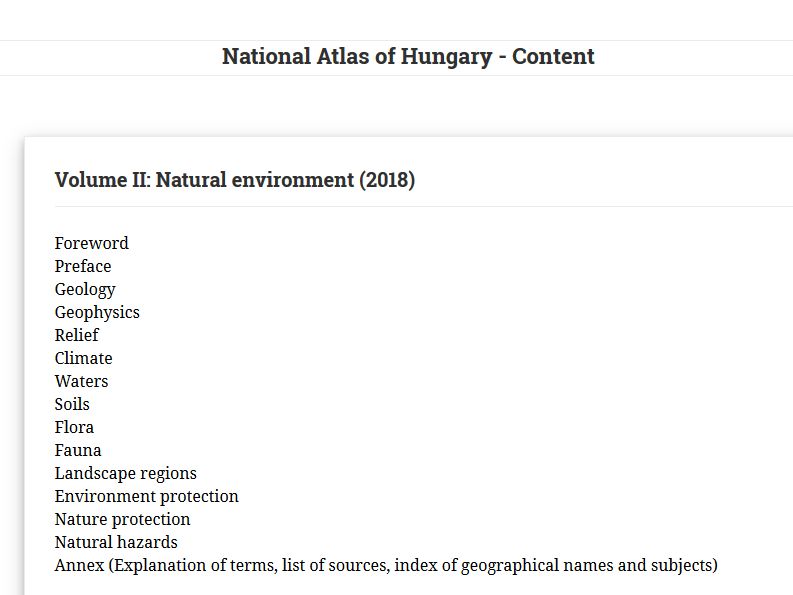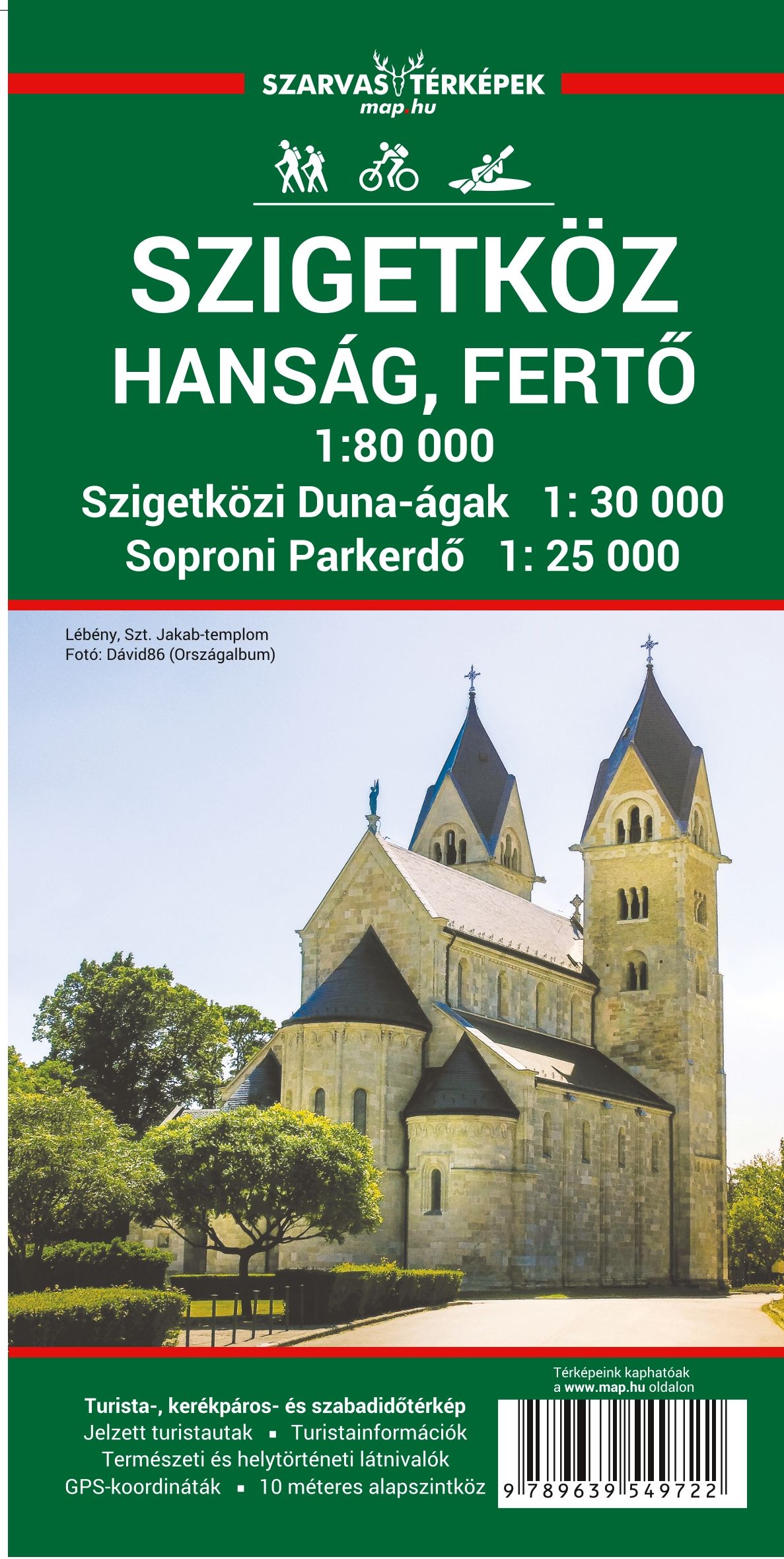Description
National Atlas of Hungary Volume 2. Natural environment
Károly Kocsis (Editor-in-chief) 2018. National Atlas of Hungary: Natural environment. Hungarian Academy of Sciences, Research Centre for Astronomy and Earth Sciences, Geographical Institute, Budapest.
The National Atlas of Hungary (MNA) was published first in 1967, then in 1989. The new edition of the Atlas in four volumes in Hungarian and also in English wishes to present the dynamic spatial structure of nature, society and the economy not merely for Hungary, but wherever the required data are available, for the Carpatho–Pannonian Area. In favour of keeping relations with the broader public and meeting the requirements of the time, the Atlas – in addition to its impressive printed form – will be published also in digital version (e-MNA) in Hungarian and English (www.nationalatlas.hu).
A national atlas is the given country’s ’identity card,’ one of its most significant national symbols in addition to its flag, coat of arms and national anthem. It is usually a series of maps complemented with textual explanations and various illustrations, which show the given state’s natural, economic and social features through logically and proportionally constructed maps using a well-defined scale and fairly uniform cartographic iconography.
The volumes of the new Hungarian National Atlas are headed by an introduction to Hungary’s natural environment. On the one hand, this publication gives an overview of the state of the lithosphere, hydrosphere and atmosphere, as well as of the biosphere in Hungary. On the other hand, there are synthetic chapters and topics that analyse how the natural and human environments are interconnected and how they interact (e.g. landscapes, environment protection, nature conservation, and natural hazards). Leafing through the thematic maps grouped together, we are informed about such diverse themes as engineering geology, earthquakes, expected changes in the elements of the climate, weather records, groundwaters, karstic, mineral, medicinal and thermal waters, the main features of soils, land quality, types and characters of landscapes, Hungary’s amazingly rich flora and fauna, the current state of the environment and waste management, protected areas, ecotourism, and the country’s main natural hazards, namely floods, excess waters, droughts, soil erosion, the spread of invasive species and pollen allergies.
On behalf of the several hundred contributors, let us express our hope that our esteemed readers inside and outside the national borders will enjoy the pleasures and benefits of browsing the printed book (despite its large size) or reading its digital version on the Atlas webpage. We trust that it will assist in getting to know the natural environment of Hungary and the Carpatho– Pannonian Area, its present state and the processes that shape it, which our contemporary society cannot ignore.
The plan is that the printed version of the National Atlas of Hungary will be published in four volumes, with one volume published each year from 2018. The planned titles and topics of the volumes are as follows:
– Natural environment;
- Society;
- The state of Hungary and its place in the world;
– Economy.













